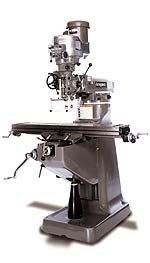jam said:
Peter Daniel take note....................
Since you asked....
I would be tempted to make all sides symetrical, this meaning that rear corners would look the same as front. It would require a more complicated back panel, but it would further improve good looks already
Peter,
You have a point, I probably would have used a heatsink for the back panel and used Mr.Pass's idea of milling out a few fins to mount the connectors, as he did in the aleph series of amps. Very fine work none the less.
I am still amazed at the quality of work that some of the members produce. Almost makes you want to go out and buy a CNC milling machine.
Regards,
Jam
You have a point, I probably would have used a heatsink for the back panel and used Mr.Pass's idea of milling out a few fins to mount the connectors, as he did in the aleph series of amps. Very fine work none the less.
I am still amazed at the quality of work that some of the members produce. Almost makes you want to go out and buy a CNC milling machine.
Regards,
Jam
Re: Gloria in Excelsis Deo!
Et in terra pax
Thanks ! And looking towards an Ono... Time is on my side
Thanks a lot, Peter ! But I'm not challenging you . Me little grasshopper. Still have to learn from the masters.
. Me little grasshopper. Still have to learn from the masters.
Yes, a lot!!! Hard times for cleaning the plates after.
Thanks Jam. May I have a note (or more) too ?
?
And here we go ! Once again, no, Peter, it's not a challenge .
.
More seriously, I had the same idea, but it required toooooo much additionnal work, and, although the journey might be more interesting than the destination, I couldn't wait more to listen to music. And from where I stand, I can't see the rear of the amps
Thanks, and yes, WAX stands for Wondeful AX, but also for Wireless AX
Et in terra pax
moe29 said:simply amazing! what excellent work
(what could you possibly build after that?)
Thanks ! And looking towards an Ono... Time is on my side
Peter Daniel said:
But seriously, very well implemented design. Just looking at the pictures, I'm developing desire to build another Aleph X (and I will definitely do).
Thanks a lot, Peter ! But I'm not challenging you
I've been using that hole saw tool to cut 1" openings in 1/4" panels with very good results, just use some lubricant.
Yes, a lot!!! Hard times for cleaning the plates after.
jam said:Cheff,
Amazing work!
Peter Daniel take note....................
Jam
Thanks Jam. May I have a note (or more) too
Peter Daniel said:
I would be tempted to make all sides symetrical, this meaning that rear corners would look the same as front. It would require a more complicated back panel, but it would further improve good looks already
And here we go ! Once again, no, Peter, it's not a challenge
More seriously, I had the same idea, but it required toooooo much additionnal work, and, although the journey might be more interesting than the destination, I couldn't wait more to listen to music. And from where I stand, I can't see the rear of the amps
Taco said:Very neat amplifier, compared to mine (I still have to take some pictures) it's the difference between wires and no wires.
Thanks, and yes, WAX stands for Wondeful AX, but also for Wireless AX
Cheff,
it definitely seems you like your drill press alot
here is the question: why not mount the output devices directly on the heatsinks instead on making them go through another transition?
Oh yeah, how how do the little source resistors get? I am using 5w to be on the safe side and they get toasty.
it definitely seems you like your drill press alot
here is the question: why not mount the output devices directly on the heatsinks instead on making them go through another transition?
Oh yeah, how how do the little source resistors get? I am using 5w to be on the safe side and they get toasty.
Peter Daniel said:Actually, if copper plates would be used here, this might be an andvantage (better heat transfer from devices).
Peter, I used to work with copper, and it's even harder to use for visible (and touchable) parts.
The oxidation is much more visible, and fingerprints are awfull.
Do you use something like anoline, bur for copper?
Taco said:Very neat amplifier, compared to mine (I still have to take some pictures) it's the difference between wires and no wires.
Taco, from what I remember your AlephXs looked quite neat too, maybe a little more "ordinary" (less fancy), but certainly not bad at all (functional is the word that comes to my mind).
Next time I bring a digicam
Duck-Twacy said:
Taco, from what I remember your AlephXs looked quite neat too, maybe a little more "ordinary" (less fancy), but certainly not bad at all (functional is the word that comes to my mind).
Next time I bring a digicam
Thx duck, you're welcome and also listen the next time
in looking closer, i noticed that the Inductors were mounted to the
PCB. I seem to remember reading somewhere that Mr. Pass
mentioned there was a problem doing it that way with the AX amps?
I've read too many threads to remember where i read that,
does anyone else remember reading that? or am i mistaken?
PCB. I seem to remember reading somewhere that Mr. Pass
mentioned there was a problem doing it that way with the AX amps?
I've read too many threads to remember where i read that,
does anyone else remember reading that? or am i mistaken?
Yepgrataku said:Cheff,
it definitely seems you like your drill press alot
Sure if I had a CNC mill, the drill press would feel a little bit neglected...
here is the question: why not mount the output devices directly on the heatsinks instead on making them go through another transition?
Oh yeah, how how do the little source resistors get? I am using 5w to be on the safe side and they get toasty.
Well, I was first reluctant in doing so. Assuming I wanted no wires between the PCB and the Mosfets, I still found two reason for finally adding such a thermal bridge. First, while making my first Zens, the power mosfets were soldered on the PCB and directly bolted on the heatsinks. And it was a real pain to have the threaded holes in the heatsinks to be aligned with the mosfets... There was always one of them that was misaligned
The second and more "serious" reason is purely mechanical. The PCB including the supply caps and the coils is quite heavy. And moreover, I even decreased its overall mechanical resistance drilling so many holes in it. The aluminium bar holding the power devices helps to rigidify (Is it english ?) the pcb with its three screws, and doesn't make the mosfets to hold all the weight of the populated PCB.
Source resistors now. Yes, I was afraid of the temperature they could reach. They have to dissipiate 0.5W @ idle. Four //ed 0.6W resistors give a 2.4W equivalent. So I should be safe... I made a little test feeding the 4 //ed with the current they will have to withstand, and, in free air, they were not very hot, I could hold a finger on them for a long time. I even investigated this with simulations on the whole circuit. They have shown that under the worst conditions (when reaching the full amp power with a continuous sine signal), the maximum (if memory serves) RMS power was near the Watt, i.e. half the maximum power. In the real life, I can hold my finger on them with no problems. Dunno why yours can toast bread..
moe29 said:in looking closer, i noticed that the Inductors were mounted to the
PCB. I seem to remember reading somewhere that Mr. Pass
mentioned there was a problem doing it that way with the AX amps?
I've read too many threads to remember where i read that,
does anyone else remember reading that? or am i mistaken?
Haven't seen this post... So many on the AX... In fact, I was a little worried by the proximity of the coils from the current source mosfets and their steel bolts, but I don't know what happens in the real life...
Nelson Pass said:In one of the Revs we mounted the inductors on the main
PCB but found that it made too much mechanical noise, with
the PCB acting as a sounding board. We had to relocate them
to the floor of the amp.
If you look at the picture on post #5, you will see a little grey thing at the base of the coil on the left. It's a little piece of plastic material, a little bit floppy and soft I salvaged long ago from a typewriter, and that I had in my junkbox. Dont' know what this material is, but it is fireproof (hard to melt with a soldering iron, impossible to burn with a lighter), and it I used it for two reasons : first, to avoid to damage the enamel on the coil wire on the PCB edges when strongly pulling the fixing ribbon, and second to damp the possible coil vibrations, since I had this little problem in my old Zens.
Seems to be efficient (no coil noise), but is it due to this material ?
Da5id4Vz said:Time for a Bridgeport Group buy?
Oh, I already got one....
I'm right in the midle of converting it to CNC now......
If you want to know where I got the inspiration take a look at the frontpage of the second part of the A-75 article.
The thing now is that as the possibilities increases, so do the demand on design skill......
My plan now is to make my own heatsinks. Custome designed heatsinks


Audio Accessories had a picture of a bench top mill in one of there old catalogs. It wasn’t CNC but did have digital readouts. It seems a much better way to drill the 192 holes for a patch field than a drill press.
http://www.patchbays.com/
I’ve been hooked ever since and often schemed for one at work but never succeeded. I think I finally have room at the house to do something modest. But there are a few other things needing to be done first.
http://www.patchbays.com/
I’ve been hooked ever since and often schemed for one at work but never succeeded. I think I finally have room at the house to do something modest. But there are a few other things needing to be done first.
Re: From the inside...
Juste one little question to clear about your lovely little blocs : Is the bias current you mention over there, per fet or total per bloc.
Thanks for your answer.
Marc
CheffDeGaar said:8xIRPF044N per channel (4 per half-side), biased @ one small Amp,
950mA more exactly. I matched the mosfets for this current,
and even matched them on transconductance. Lot of time here,
since I had 60 of them...
Juste one little question to clear about your lovely little blocs : Is the bias current you mention over there, per fet or total per bloc.
Thanks for your answer.
Marc
- Status
- This old topic is closed. If you want to reopen this topic, contact a moderator using the "Report Post" button.
- Home
- Amplifiers
- Pass Labs
- Merry Aleph-X-Mas !


